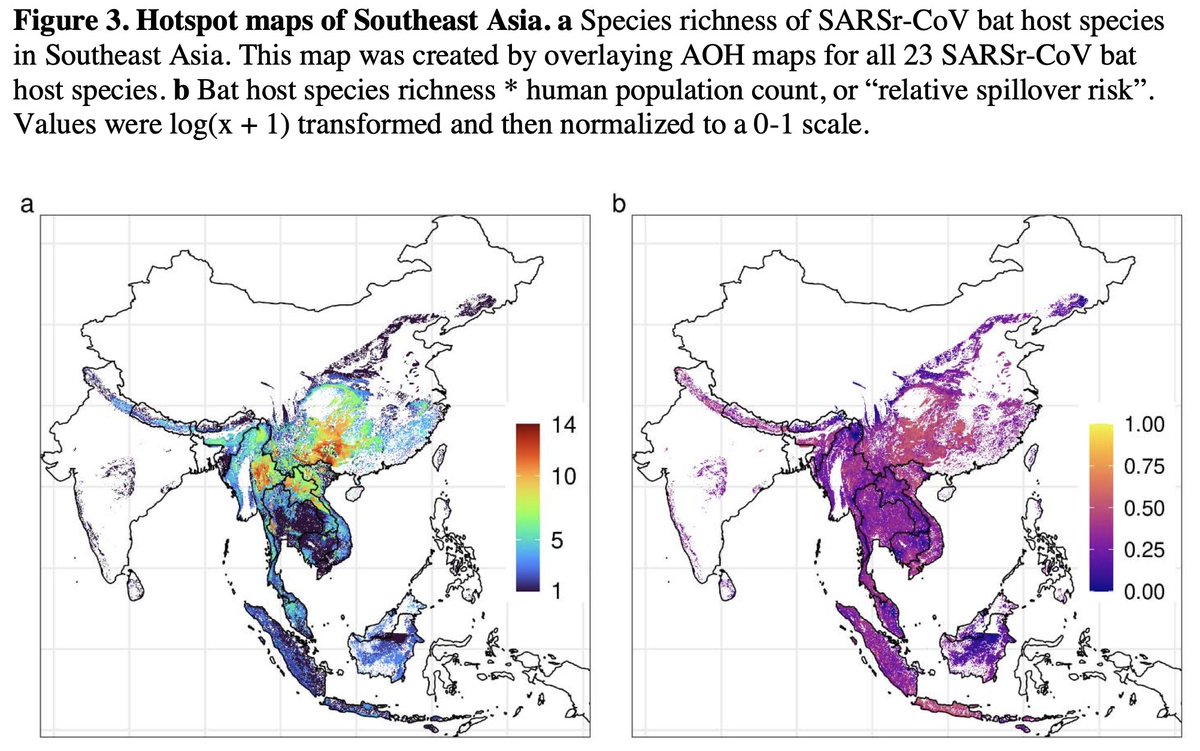
So today, @WHO unveiled a new team of scientists from around the world that will guide the search for the origins of #covid19 but also work on future outbreaks and more generally on emerging pathogens.
Story here (and short thread to come):
science.org/content/articl…
Story here (and short thread to come):
science.org/content/articl…
@WHO Who are they?
"This is an incredibly impressive group of experts”, @alexandraphelan told me: 26 researchers from 26 countries.
And @angie_rasmussen told me: "I’m pleased to see a list with such strong representation of the global south”
List is here: who.int/news-room/arti…
"This is an incredibly impressive group of experts”, @alexandraphelan told me: 26 researchers from 26 countries.
And @angie_rasmussen told me: "I’m pleased to see a list with such strong representation of the global south”
List is here: who.int/news-room/arti…
@WHO @alexandraphelan @angie_rasmussen The list includes seven researchers that were involved in the first WHO origins mission.
That might be criticised by some, @angie_rasmussen told me. But: "I think it is important for continuity and to assert that the first mission wasn’t a total wash"
That might be criticised by some, @angie_rasmussen told me. But: "I think it is important for continuity and to assert that the first mission wasn’t a total wash"
@WHO @alexandraphelan @angie_rasmussen 11 of the 26 members are women, which is a good start, though, as @alexandraphelan told me,
"especially given historical inequities, international expert groups like this really should be aiming for more than 42% women"
"especially given historical inequities, international expert groups like this really should be aiming for more than 42% women"
@WHO @alexandraphelan @angie_rasmussen As many observers have noted, what seems to be lacking so far is legal, ethical and social expertise.
As @alexandraphelan
told me: "It would be to the benefit of any future origins investigations to have this suite of skills represented."
As @alexandraphelan
told me: "It would be to the benefit of any future origins investigations to have this suite of skills represented."
@WHO @alexandraphelan @angie_rasmussen What will this team do?
Well, the terms of reference for SAGO (Scientific Advisory Group on the Origins of Novel Pathogens) as it’s officially known suggests they won’t get bored.
cdn.who.int/media/docs/def…
Well, the terms of reference for SAGO (Scientific Advisory Group on the Origins of Novel Pathogens) as it’s officially known suggests they won’t get bored.
cdn.who.int/media/docs/def…
@WHO @alexandraphelan @angie_rasmussen Part of their work is general:
- help develop a “global framework to define and guide studies into the origins of emerging and re-emerging pathogens of epidemic and pandemic potential”
- advise on prioritizing those studies and field investigations
- help develop a “global framework to define and guide studies into the origins of emerging and re-emerging pathogens of epidemic and pandemic potential”
- advise on prioritizing those studies and field investigations
@WHO @alexandraphelan @angie_rasmussen The hope is that such a framework will make future investigations less contentious.
As @DrTedros and colleagues write today in Science: “Each time, scientists at the WHO and elsewhere faced challenges—not only scientific, but also logistical and political”
science.org/doi/10.1126/sc…
As @DrTedros and colleagues write today in Science: “Each time, scientists at the WHO and elsewhere faced challenges—not only scientific, but also logistical and political”
science.org/doi/10.1126/sc…
@WHO @alexandraphelan @angie_rasmussen @DrTedros But of course all eyes are on the #covid19 work.
The team is tasked with an “independent evaluation” of the available evidence on SARSCoV2’s origins
and
advising WHO on “the next series of studies.”
The team is tasked with an “independent evaluation” of the available evidence on SARSCoV2’s origins
and
advising WHO on “the next series of studies.”
@WHO @alexandraphelan @angie_rasmussen @DrTedros So does this have a chance of putting the origins search on the right track?
“If I didn’t think that, I wouldn’t have agreed to be a part of this”, @MarionKoopmans told me. Though she also acknowledged that the sheer size of the group won’ make things easier.
“If I didn’t think that, I wouldn’t have agreed to be a part of this”, @MarionKoopmans told me. Though she also acknowledged that the sheer size of the group won’ make things easier.
@WHO @alexandraphelan @angie_rasmussen @DrTedros @MarionKoopmans And @angie_rasmussen told me: "No question, this is a thankless job that will be heavily scrutinized and will be limited in its ability to investigate SARS-CoV-2 origins within China because of all the political messiness around the issue”
@WHO @alexandraphelan @angie_rasmussen @DrTedros @MarionKoopmans And for future outbreaks?
“Setting up a group like SAGO is a sensible idea,” @Leendertz_Lab says. “But it is important that this should not deter independent groups who can be on the ground very fast once an outbreak is detected from doing their own work to investigate origins.”
“Setting up a group like SAGO is a sensible idea,” @Leendertz_Lab says. “But it is important that this should not deter independent groups who can be on the ground very fast once an outbreak is detected from doing their own work to investigate origins.”
It’s easy to criticize groups like this being set up, but to me it seems a smart move both in the short and the long term and I’m curious to see what this group of scientists from around the globe do.
As @DrMikeRyan said today: “All of the scientists joining this process understand those external pressures and the scrutiny, and the visibility of the process”
So let’s give them a chance to do their work and let’s see…
So let’s give them a chance to do their work and let’s see…
@DrMikeRyan And to be clear: These names have been put forward, but there is now a two-week window for any concerns about these members to be raised etc.
That is as it should be.
That is as it should be.
• • •
Missing some Tweet in this thread? You can try to
force a refresh





